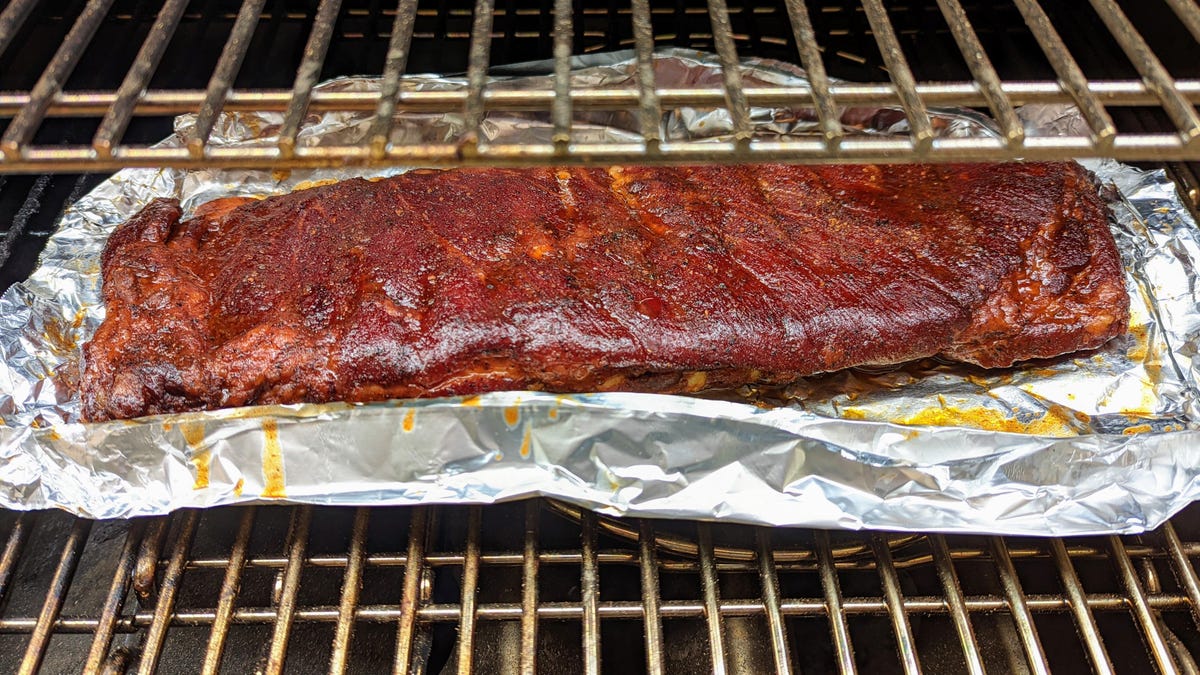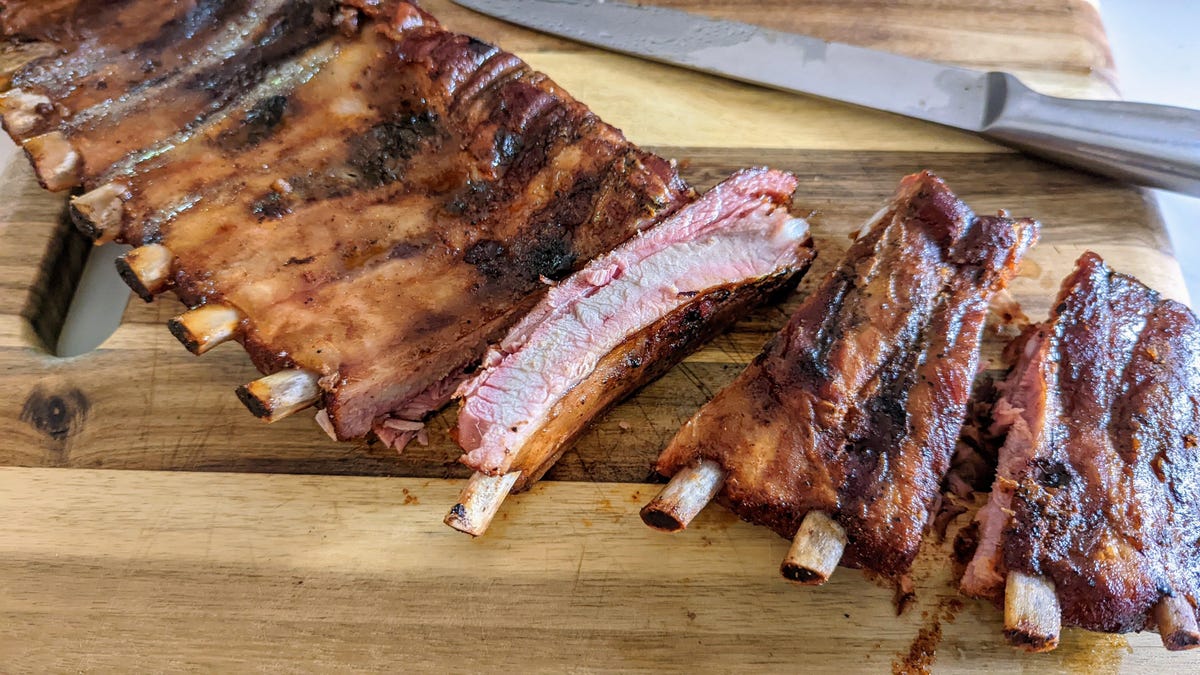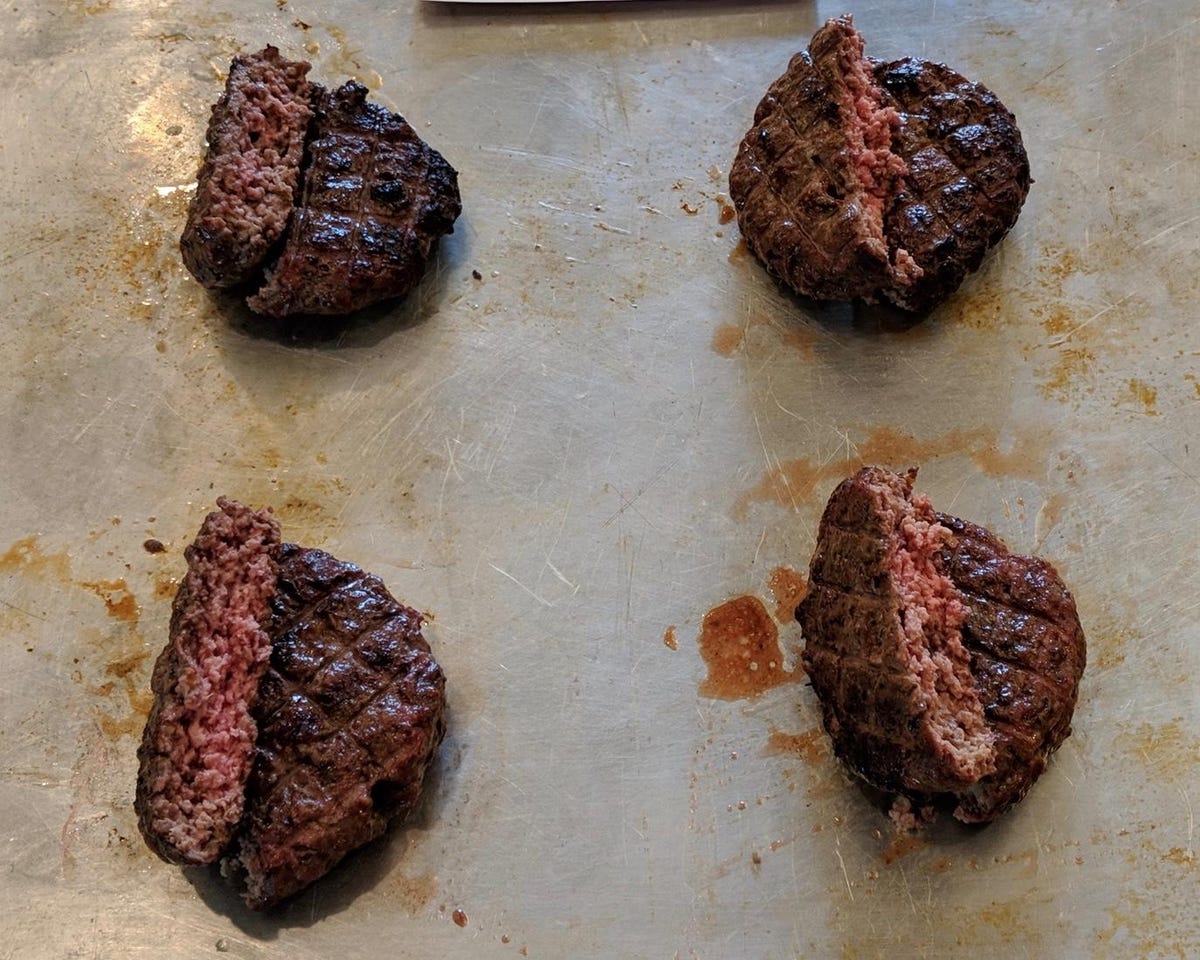While most modern pellet shutters have digital temperature readings and do a very good job in maintaining temples, it is not always the case.
To determine the best ripening of the pellet and to understand how these products perform under a variety of cooking scenarios, we perform three tests. Based on different meat, heat methods and settings, these tests tell us how efficient and evenly cook a grill (or not).

Expand the image
Smoking low and slow pork ribs is a perfect test for pellet grills.
Rib
We attached each grill to a sensitive thermouplain thermometer at the level of the grate. This sensor is also attached to a software for cutting laptop data.

Expand the image
Beautiful smoked ribs should be juicy, soft and delicious.
Next we turn the grill and set the temperature to 225 degrees F and start registration. Then we remove the outer membrane on a rack of the pork back ribs and season it with a wipe with all the purposes we use for ribs and chicken. After the Grill thermometer reports that it has hit our desired temperature, we place it in women for at least three hours with the lid closed all the time.

Can Chicken Beer is a great way to add flavor and moisture to your chicken while cooking on your pellet grill.
Chicken
To try a medium cooking time in the medium heat environments, we bake a whole chicken to 400 degrees F. Once we have cut and cross the bird, we insert a temperature probe into each chicken breast, for two probes for chicken. To keep our results as fair as possible, all chickens are as close as possible by 5.5 pounds.
To mix, we also tested beer can chicken to give another way to assess bird cooking. Standing the chicken standing while cooking, it represents another level of cooking accuracy for the grill as not all meat is relatively the same distance from the heat. Using the same methods to follow temperatures throughout the chef, the chickens came out with juicy and delicious on the heat of Smokey 350 degrees.

Expand the image
Cooking high heat burgers helps us see how a pellet meat sears.
Burger
Burgers are our final test for our grill ratings. We measure 5.3 ounces of 80/20 beef of the Earth and press them into uniform patties. These patties enter a grill basket and we insert a temperature probe in the center of each patty at an angle of 45 degrees.
With predetermined grill for 10 minutes at its higher temperature placement, the basket goes to the grill. After six minutes of cooking, we roll the basket and monitor the indoor temperature. As soon as the last burger in the basket reach 145 degrees F, the group is over. A good burger in this test is one who has a beautiful outer external and a slightly pink center.
Burger’s testing shows any hot stain across the grill cooking surface if a burger constantly reaches 145 degrees f in front of others in every round.
Pork

Buying a whole pig and cutting your pieces is a great way not only to save money, but also get pork pieces for cooking.
For the pieces, I bought a whole pig container and cut the thick pieces of approximately 1 inch from it. Doing this, not only is it more economical, but also ensures that the incisions are equal in thickness for more equal cooking. After some spices, the pig cuts cut into the center went to the grill.
Temperatures were monitored throughout the chef on a 350 degree grill using the same methods as with hamburgers. Cooked cuttings evenly and relatively quickly as there are no bones to fight with it.
Pork butt

A pork butt in the boston is a great piece of meat for pellet shutters as it can take a lot of smoke and provide delicious ready -made meat.
For a longer cooking test, I used approximately six pounds of pork booston, or pork shoulder, with a mixture of a dry, delicious dry, yellow mustard friction and knows as a connector. With pellet grills located at 225 degrees F, each part of the meat took two meat probes to monitor the temples.
After cooking at 165 degrees F from the inside, I wrapped the meat on the butcher’s paper and put it again in the grill until it reached 195 degrees F. Then it was time to let the meat rest for an hour or more. After this was done, I put the meat on a tray and chopped it removing it, resulting in juicy, smoked, soft pork, mac and cheese, and so many other dishes.
vial

Beef bands can be complicated to cook as it requires a long time at low temperatures to properly disrupt fat and meat fibers.
The final test was an even longer chef with a calf for a 13-hour period. The meat was trimmed, a treatment of thick hive salt, yellow mustard and a smoked beef rubbing, then three meat probes to keep track of temples through the large piece of meat. With all the ones done, the bracelets were placed in the middle of the grill at 225 degrees.
After about six hours and an inner temperature of 165 degrees, I wrapped the circle on butcher paper and put it back on the grill. After it hit 195 degrees, I wrapped the aluminum foil around it to help maintain moisture and finish the cook at 225 degrees.
Grills produced juice with a beautiful smoke ring that welcomed beautifully. Being able to maintain equal heat, durable for something like rods that require a long time to cook is vital to proper fat breakdown and protein fibers for delicious food.